Industrial power plant boilers are massive capital assets at the heart of large-scale steam and electricity generation. Choosing the right boiler involves more than just a price tag—without understanding the upfront and long-term costs, operators may face budget overruns, costly inefficiencies, or unexpected regulatory expenses. A complete financial perspective is necessary to ensure reliable performance, compliance, and return on investment over the boiler’s operating life.
The upfront costs of an industrial power plant boiler include the purchase of the boiler itself, site preparation, structural steel, piping, control systems, fuel and ash handling infrastructure, emissions controls, and installation. Long-term costs include fuel consumption, maintenance, system upgrades, staffing, water treatment, ash disposal, emissions compliance, energy losses, and eventual decommissioning or replacement. Since power plant boilers often operate for 25–40 years, fuel and maintenance represent the largest portions of Total Cost of Ownership (TCO).
Here’s a detailed breakdown of both short-term and long-term cost considerations.
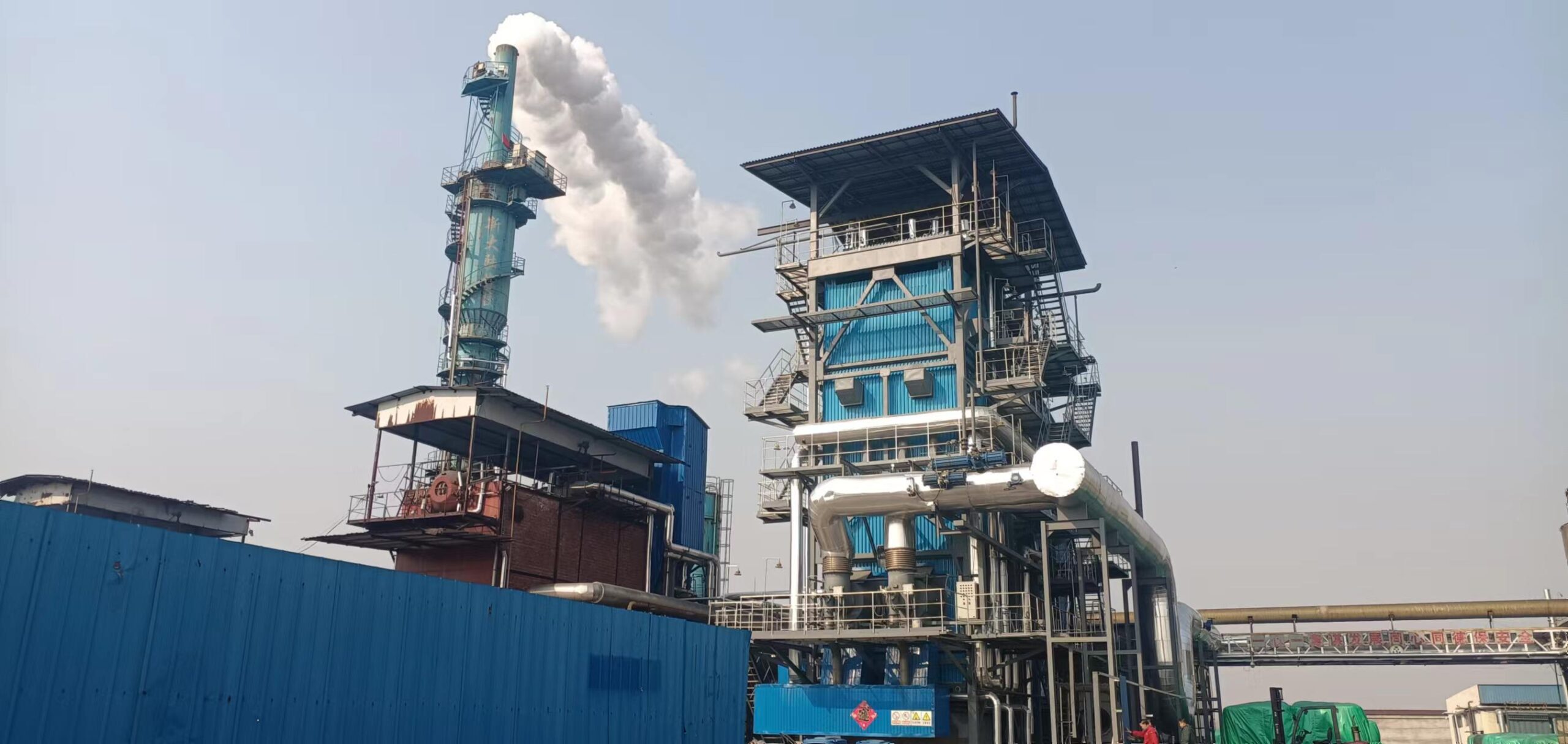
What Are the Typical Upfront Capital Costs of a Power Plant Boiler System?
When planning a power generation facility—whether fossil-fueled, biomass, or hybrid—the boiler system is often the single largest capital cost component. This cost goes far beyond just the combustion unit. It includes boiler auxiliaries, fuel systems, emissions controls, electrical systems, water treatment, control instrumentation, civil works, and installation. These elements must be scoped and budgeted meticulously to avoid cost overruns, ensure commissioning success, and support long-term reliability.
The typical upfront capital costs of a power plant boiler system range from $400 to $1,500 per kilowatt (kW) installed, depending on boiler type, fuel source, emissions control requirements, plant size, and site complexity. For utility-scale systems, this translates to $50–200 million for a 100–150 MW facility. The largest cost elements include the boiler island itself, flue gas treatment, fuel and ash handling, and balance-of-plant infrastructure. Proper budgeting ensures that the boiler system is integrated, compliant, and cost-effective over its lifecycle.
Understanding these costs upfront is essential for bankability, feasibility studies, and lifecycle planning.
Total installed capital cost of a power plant boiler system typically represents 40–60% of a thermal plant’s total EPC cost.True
This includes all equipment and infrastructure required to support safe and compliant boiler operation.
🔧 Typical Capital Cost Ranges by Boiler Type
| Boiler Type | Typical Cost Range ($/kW installed) | Notes |
|---|---|---|
| Pulverized Coal (PC) Boiler | $1,000 – $1,300 | High emissions controls and coal handling needed |
| Circulating Fluidized Bed (CFB) | $800 – $1,200 | Flexible fuel use; more complex refractory/ash systems |
| Biomass Grate-Fired Boiler | $600 – $1,000 | Lower capacity; extensive fuel handling and drying |
| Gas-Fired Package Boiler | $400 – $800 | Lower CAPEX; minimal emissions equipment required |
| Oil-Fired Industrial Boiler | $500 – $850 | Simple design, moderate emissions cost |
Costs vary by region, project scale, and technology vendor.
🧮 Capital Cost Example – 150 MW CFB Power Boiler Project
| System Component | Estimated Cost (USD) |
|---|---|
| Boiler Island (CFB, separators, superheater) | $30 million |
| Fuel Handling & Storage | $15 million |
| Ash Handling Systems | $8 million |
| Flue Gas Cleaning (Baghouse, SNCR) | $18 million |
| Water Treatment & Blowdown | $7 million |
| Electrical Systems (Switchgear, MCCs, cabling) | $6 million |
| Instrumentation & Controls (DCS, CEMS) | $5 million |
| Civil Works & Foundations | $10 million |
| Mechanical Installation & Labor | $12 million |
| Engineering, Design, Permitting | $6 million |
| Total Installed CAPEX | ~$117 million |
Equivalent to $780/kW installed for a high-performance CFB system.
📊 Cost Breakdown by Major System
| System or Scope | % of Total Boiler CAPEX |
|---|---|
| Boiler Island | 25–30% |
| Fuel & Ash Handling | 15–20% |
| Flue Gas Treatment | 15–20% |
| Water Systems | 5–8% |
| Electrical & Controls | 10–12% |
| Civil & Structural | 10–15% |
| Engineering & Permitting | 5–10% |
Emissions systems often equal the boiler price in modern compliance-heavy environments.
📋 Key Factors That Influence Capital Cost
| Factor | Impact on Budget |
|---|---|
| Fuel Type | Solid fuels (coal/biomass) raise CAPEX |
| Emissions Regulation | SCR, scrubbers, CEMS add major costs |
| Load Size & Redundancy | Larger plants benefit from economies of scale |
| Site Conditions | Geotechnical work, access, labor costs |
| Automation & Controls Level | Higher intelligence adds cost but saves OPEX |
| Technology Vendor & EPC Contract | Procurement strategy affects pricing |
Fuel type and emissions regulation level are the two most significant factors in determining boiler system capital cost.True
They influence equipment complexity, environmental controls, and permitting scope.
📈 Upfront Investment by Scale
| Plant Size (MW) | Estimated Installed Boiler CAPEX |
|---|---|
| 25 MW | $18 – $25 million |
| 50 MW | $35 – $50 million |
| 100 MW | $70 – $110 million |
| 150 MW | $110 – $160 million |
| 300 MW | $220 – $350 million |
Costs are project-specific—these are average, planning-grade values.
Summary
The typical upfront capital cost of a power plant boiler system is substantial and multifaceted, encompassing far more than the pressure vessel itself. From fuel logistics and flue gas treatment to water chemistry and automation, the boiler’s infrastructure defines its operational capability, efficiency, and environmental compliance. With cost ranges from $400 to $1,500 per kW installed, depending on technology and fuel type, careful planning and engineering are essential to keep projects on budget and on schedule. In power generation, the real power begins with the right boiler—and the right capital plan to build it.
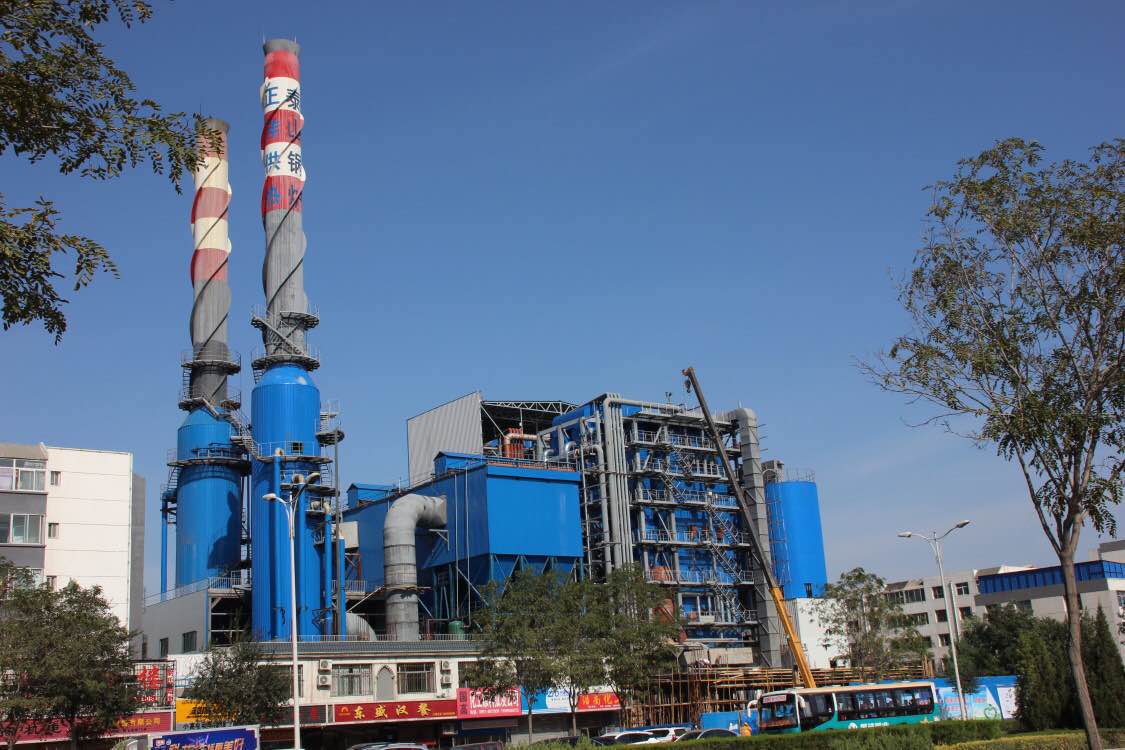
How Do Auxiliary Systems (Fuel Prep, Ash Handling, Emissions Control) Add to Investment Cost?
When planning and budgeting for a power plant boiler system, the boiler island often gets the spotlight. However, auxiliary systems—such as fuel preparation, ash handling, and emissions control—can account for more than 50% of the total installed cost. These systems are essential for making the boiler functional, efficient, and compliant with environmental regulations. They also vary significantly depending on the fuel type, emissions targets, and site logistics, which means underestimating them can lead to budget overruns and commissioning delays.
Auxiliary systems like fuel preparation, ash handling, and emissions control can add 40% to 70% to the total investment cost of a power station boiler. These systems include conveyors, crushers, silos, pneumatic or mechanical ash conveyors, baghouses, scrubbers, and urea or ammonia dosing for NOₓ reduction. Their complexity and cost are driven by fuel properties, environmental regulations, and plant scale. Fully integrated, these systems ensure the boiler operates cleanly, safely, and efficiently, making them essential—not optional—parts of a complete power boiler project.
Ignoring these costs during planning is like budgeting for a car without the wheels, exhaust, or steering.
Auxiliary systems for fuel, ash, and emissions often exceed the boiler equipment cost in modern power plants.True
Stringent environmental standards and fuel variability require robust auxiliary infrastructure, driving up capital costs.
🔧 Breakdown of Major Auxiliary Systems and Their Functions
| System Type | Subsystems Included | Purpose |
|---|---|---|
| Fuel Preparation | Hoppers, crushers, screens, conveyors, dryers | Ensures correct fuel size, moisture, and flow |
| Ash Handling | Bottom ash extractors, fly ash silos, crushers | Removes and stores ash safely and efficiently |
| Emissions Control | Baghouse, SCR, SNCR, FGD, CEMS | Reduces NOₓ, SO₂, PM, CO emissions to legal limits |
| Air & Draft Systems | FD/ID fans, air preheaters, dampers | Controls air supply and flue gas movement |
| Water & Blowdown | Deaerators, softeners, chemical dosing | Protects boiler from scaling and corrosion |
Each of these subsystems must be included in initial CAPEX estimates and sized for full load.
📊 Typical Auxiliary Systems Cost Share (% of Total Boiler System Investment)
| System Type | Share of Installed Boiler CAPEX (%) |
|---|---|
| Fuel Handling & Prep | 10–20% |
| Ash Handling | 5–10% |
| Emissions Control | 15–25% |
| Water Treatment | 3–5% |
| Electrical & Controls | 8–12% |
| Total Auxiliaries | 40–70% |
A modern coal- or biomass-fired boiler’s auxiliaries can double the raw boiler price.
🧮 Example: 100 MW Power Plant Boiler Project – Auxiliary CAPEX
| System | Estimated Cost (USD) |
|---|---|
| Boiler Island (core unit) | $35 million |
| Fuel Prep & Handling | $12 million |
| Ash Handling | $6 million |
| Emissions Control (Baghouse, SNCR) | $18 million |
| Water Treatment & Blowdown | $4 million |
| Instrumentation & Controls | $5.5 million |
| Electrical Integration | $4.5 million |
| Civil, Foundations, Piping | $10 million |
| Total Project Installed Cost | ~$95 million |
The boiler itself is only 37% of the installed system investment—the rest is auxiliaries.
📋 Capital Cost Sensitivity Based on Fuel and Regulation
| Variable | Cost Impact |
|---|---|
| High-ash fuel (e.g. lignite) | Requires robust ash removal, larger silos |
| Biomass fuels | Needs drying, screening, and metering |
| Petroleum coke or sulfur-rich coal | Triggers need for SO₂ scrubbers |
| Stringent NOₓ limits | Requires SCR instead of cheaper SNCR |
| Remote sites | Higher civil and transport infrastructure |
Fuel properties and emissions standards directly influence the design and cost of boiler auxiliary systems.True
They dictate equipment type, size, redundancy, and regulatory compliance infrastructure.
📈 Auxiliary Systems Payback Potential
| Upgrade Option | Added CAPEX | Payback Time | Benefit |
|---|---|---|---|
| High-efficiency baghouse | +$2M | 3–5 years | Lower PM emissions, less wear |
| Automated ash extraction | +$1M | 2–4 years | Less labor, fewer shutdowns |
| Biomass fuel drying system | +$3M | 4–6 years | Higher boiler efficiency |
| Low-NOₓ burner system | +$1.5M | 3–5 years | Emission compliance, fuel savings |
Thoughtful auxiliary investment can reduce long-term OPEX and regulatory risk.
Summary
Auxiliary systems—fuel prep, ash handling, emissions control, and balance-of-plant—are integral and capital-intensive components of any power boiler installation. They ensure operability, efficiency, and compliance, and typically account for 40% to 70% of total boiler project costs. Failing to account for these systems in initial budgets leads to costly retrofits and delays. Smart engineering and accurate forecasting turn these support systems from cost burdens into efficiency and compliance assets. In power generation, the boiler may do the burning—but the auxiliaries do everything else to keep the flame burning clean and profitably.
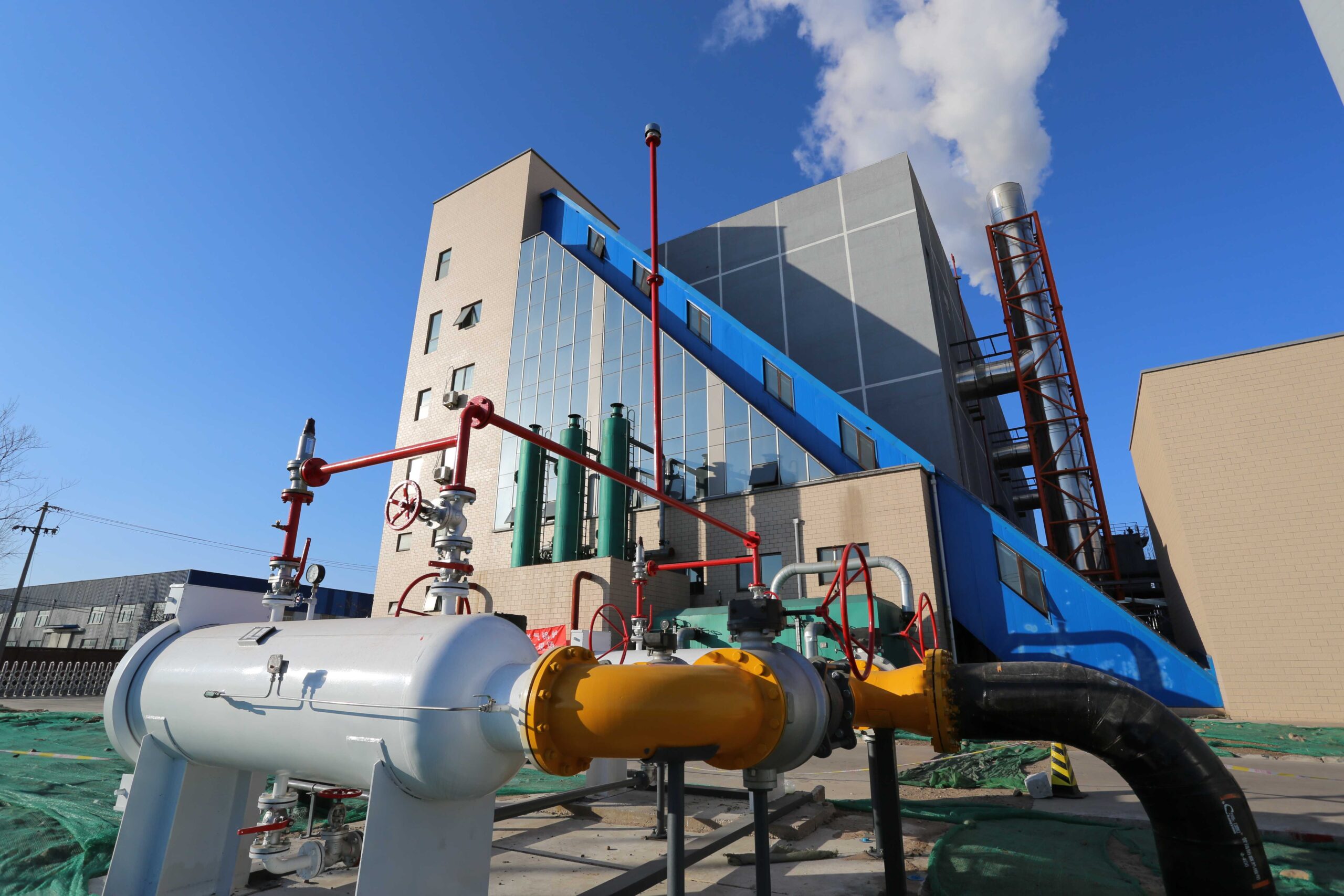
What Long-Term Fuel and Operational Expenses Drive the Majority of Lifecycle Costs?
While the capital investment for a power station boiler is substantial, the majority of its total lifecycle cost (TLC) is determined by long-term fuel and operational expenses. These include not just the fuel consumed to generate thermal energy, but also the costs of maintaining the system, handling ash and emissions, paying for labor, consumables, and managing downtime. In most thermal plants, fuel alone can account for 60–70% of the total cost over a 20–30 year period, making it the single most influential financial factor.
The largest drivers of lifecycle costs in power station boilers are long-term fuel consumption, maintenance and repair, emissions control, and ash handling. Fuel costs represent the bulk of expenses—often exceeding 65% over the life of the asset—while maintenance and environmental compliance add another 20–30%. Variables such as fuel price volatility, ash content, sulfur levels, emissions regulations, and equipment aging further amplify these costs. Understanding and forecasting these expenses is essential for accurate total cost of ownership (TCO) analysis and sound investment planning.
A boiler burns fuel—but over its life, fuel and operations burn through the majority of your budget.
Fuel and operational expenses represent more than 80% of total lifecycle costs in most utility-scale boiler systems.True
These recurring costs—especially fuel and maintenance—far outweigh the initial capital investment over decades of operation.
🔥 Major Lifecycle Cost Drivers in Power Boilers
| Category | Description | % of Total Lifecycle Cost |
|---|---|---|
| Fuel | Coal, biomass, gas, or oil cost over boiler life | 60–70% |
| Maintenance & Repairs | Refractory, pumps, fans, piping, instrumentation | 10–15% |
| Emissions Compliance | Baghouse, SCR/SNCR, limestone, ammonia, reporting | 8–12% |
| Ash Handling & Disposal | Conveyors, crushers, silos, landfill tipping | 3–6% |
| Labor & Operations | Operators, engineers, site admin | 5–8% |
| Water & Chemical Treatment | Deaerators, blowdown, dosing chemicals | 2–4% |
| Insurance, Permits, Misc. | Facility coverage, monitoring, permit renewals | 1–3% |
📊 Example: 150 MW CFB Boiler – 20-Year Lifecycle Cost Projection
| Cost Element | 20-Year Estimate (USD) |
|---|---|
| Fuel (e.g. 500,000 tons/year @ $95 avg) | $950 million |
| Maintenance & Refractory | $100 million |
| Emissions Control (O&M + reagents) | $90 million |
| Ash Handling & Disposal | $45 million |
| Labor & Staffing | $60 million |
| Water Treatment & Consumables | $20 million |
| Insurance & Overhead | $15 million |
| Total Lifecycle Cost | ~$1.28 billion |
Fuel alone accounts for nearly 75% of total lifecycle cost.
📦 Fuel Cost Dynamics – Key Influencers
| Factor | Impact on Fuel Cost Over Time |
|---|---|
| Fuel Type (coal vs. biomass) | Affects $/ton, CV, ash, sulfur |
| Moisture & Ash Content | Increases tonnage burned per MWh |
| Market Volatility | Fossil fuels subject to price swings |
| Transportation Costs | Rail, shipping, storage add to $/ton |
| Energy Density (CV) | Lower CV = higher volume and cost |
Low-calorific fuels with high moisture or ash content significantly increase lifecycle fuel costs.True
These fuels require more mass to produce the same heat, and create higher ash and emissions burdens.
🛠️ Maintenance Cost Considerations
| Area | Common Repairs & Frequency | Cost Range (USD/year) |
|---|---|---|
| Refractory Zones | Re-lining cyclones, seal pots | $250,000 – $500,000 |
| Pumps & Fans | Bearings, seals, vibration fixes | $100,000 – $200,000 |
| Tube Leaks/Inspections | UT scans, hydro tests, welds | $150,000 – $300,000 |
| Control System Upkeep | Calibrations, PLCs, sensors | $75,000 – $150,000 |
Annual maintenance costs increase with boiler age, ash loading, and fouling.
🌫️ Emissions & Environmental Cost Drivers
| Emission Type | Control Method | Ongoing Cost Elements |
|---|---|---|
| SO₂ | Limestone injection | Limestone supply, silo upkeep |
| NOₓ | SNCR/SCR | Urea or ammonia, catalyst change |
| Particulates (PM) | Baghouse/ESP | Bag replacement, dust collection |
| CO₂ (tax/credits) | Carbon pricing (where applicable) | Emissions reporting or offsets |
| Annual Compliance Cost | Range (USD) |
|---|---|
| Moderate regulation | $300,000 – $500,000 |
| Stringent regulation | $600,000 – $1.2 million |
Non-compliance results in fines, permit revocation, or forced derating.
📋 Strategies to Manage Long-Term Cost Drivers
| Optimization Area | Action | Benefit |
|---|---|---|
| Fuel Procurement | Secure long-term contracts, blend fuels | Stabilize price & quality |
| Predictive Maintenance | Condition monitoring, early repairs | Reduce outages and repair cost |
| Ash Handling Automation | Reduce manual handling and downtime | Fewer trips and less O&M labor |
| Emission Tuning | Automated SNCR and O₂ trim controls | Reduce reagent use and overshoot |
| Lifecycle Modeling | Include all O&M and compliance costs upfront | Accurate investment decisions |
Predictive maintenance can reduce long-term boiler O&M costs by up to 30% by avoiding unplanned outages.True
Condition-based monitoring catches issues early, extending component life and preventing failures.
Summary
In power station boilers, fuel consumption is by far the largest driver of lifecycle cost, followed by maintenance, emissions control, ash handling, and labor. These costs are magnified by the nature of the fuel (moisture, ash, sulfur), regulatory environment, and operating hours. While the boiler’s capital cost is substantial, it is the fuel and daily operations that define financial performance over decades. Long-term planning that includes accurate OPEX modeling and optimization strategies is critical to managing these drivers. In thermal generation, success lies not just in how a boiler is built, but in how economically it can be kept running.
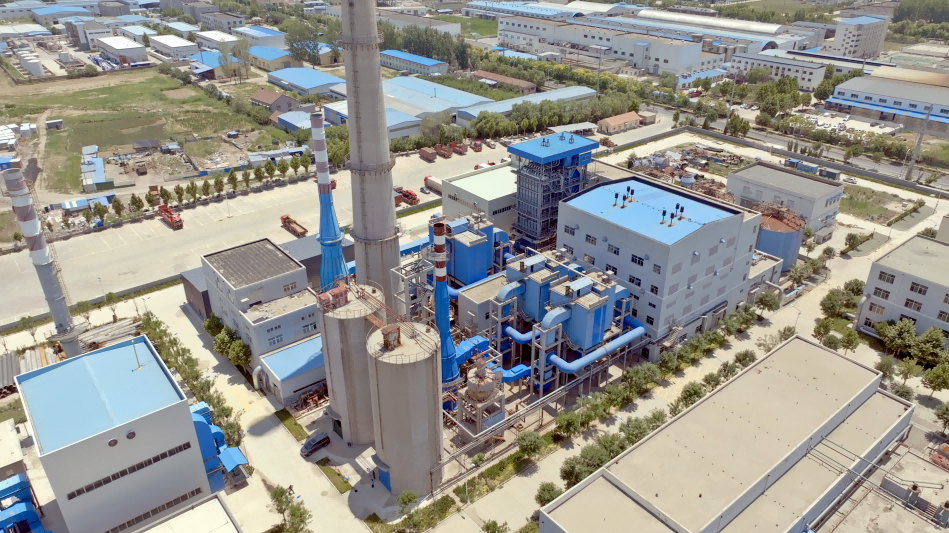
What Are the Ongoing Maintenance, Labor, and Part-Replacement Costs?
Power station boilers operate under continuous high-pressure, high-temperature, and chemically aggressive environments. Over time, these conditions lead to wear, erosion, corrosion, and fatigue in critical components—necessitating planned maintenance, skilled labor, and part replacements to ensure safety, efficiency, and availability. These recurring costs are substantial and account for 10–20% of total annual operational expenses, depending on boiler type, fuel, and runtime. Budgeting for these correctly is essential to avoid unplanned outages and financial surprises.
Ongoing maintenance, labor, and part-replacement costs in power station boilers include annual inspections, preventive overhauls, refractory relining, burner and fan servicing, tube replacements, control calibrations, and labor staffing. These costs typically range from $5–15 per MWh or $500,000 to over $2 million per year for medium-to-large plants. Failure to maintain key components leads to forced outages, derating, and exponentially higher emergency repair expenses.
Planned maintenance costs far less than unplanned failure—and every hour of uptime depends on every dollar spent on upkeep.
Annual maintenance and part replacement costs for utility-scale boilers range from $500,000 to over $2 million depending on scale and fuel type.True
Fuel ash content, load factor, emissions systems, and age all influence recurring maintenance needs.
🔧 Breakdown of Major Maintenance & Part Replacement Areas
| Component Area | Maintenance Scope | Frequency |
|---|---|---|
| Boiler Tubes | Inspection (UT), leak detection, re-tubing | Annually / 3–6 years |
| Refractory | Visual check, hot-spot scans, patching or relining | Every 1–3 years |
| Fans (ID, FD, PA) | Bearing checks, motor alignment, vibration analysis | Quarterly |
| Burners and Valves | Cleaning, nozzle replacement, flow checks | Semi-annually |
| Pumps (Boiler feed, condensate) | Seal changes, vibration, wear part swaps | Annually |
| Sootblowers / Ash Systems | Lance inspection, gearbox greasing, nozzle swap | Annually |
| Control Systems | PLC calibration, HMI replacement, actuator tuning | Annually |
📊 Example Annual Maintenance Cost Range – 150 MW Coal-Fired Boiler
| Cost Item | Typical Annual Cost (USD) |
|---|---|
| Tube Leak Repair & Inspections | $200,000 – $400,000 |
| Refractory Patching / Relining | $150,000 – $300,000 |
| Pump & Fan Maintenance | $100,000 – $200,000 |
| Burner Servicing | $50,000 – $100,000 |
| Ash & Soot Handling Gear | $40,000 – $90,000 |
| Instrumentation & PLC Upkeep | $60,000 – $120,000 |
| Total Maintenance Cost | $600,000 – $1.2 million |
Aged plants or those running >7,500 hours/year may spend 20–30% more on parts and service.
🧑🏭 Labor Staffing and Operational Costs
| Role | Headcount (Typical) | Annual Cost per Role (USD) |
|---|---|---|
| Control Room Operators | 4–6 | $300,000 – $450,000 |
| Maintenance Technicians | 3–5 | $200,000 – $350,000 |
| Electrical & Instrumentation | 2–3 | $150,000 – $250,000 |
| Management & Admin | 1–2 | $100,000 – $180,000 |
| External Services/Consultants | — | $80,000 – $200,000 |
| Total Labor (Annual) | — | $850,000 – $1.4 million |
Labor costs vary based on region, unionization, and shift coverage (24/7 vs. 5-day).
🔩 Commonly Replaced Parts and Their Cost Impact
| Part Name | Replacement Cycle | Unit Cost (USD) | Notes |
|---|---|---|---|
| Waterwall Tubes (sectional) | 3–7 years | $8,000 – $15,000 | Per tube bank |
| Refractory Castables | 2–3 years | $300 – $500/ton | Cyclones, loop seals |
| Sootblower Nozzles | Annually | $500 – $1,200 | Can erode with high ash |
| Fan Bearings & Seals | 2–4 years | $2,000 – $5,000 | Critical to avoid vibration failures |
| Burners or Lances | 2–5 years | $10,000 – $30,000 | More for low-NOₓ or gas burners |
| Control Modules (PLCs, HMIs) | 5–10 years | $5,000 – $15,000 | Obsolescence or surge failure |
Some spares must be kept on-site to avoid long lead times and costly downtime.
📈 Annual Lifecycle Cost Percentages (Tied to Maintenance & Labor)
| Category | % of Annual OPEX |
|---|---|
| Fuel | 60–70% |
| Maintenance + Parts | 10–15% |
| Labor | 8–12% |
| Emissions Reagents | 5–8% |
| Water Treatment & Others | 2–5% |
Combined, maintenance, labor, and spares = 20–30% of yearly operating budget.
📋 Strategies to Control Maintenance & Replacement Costs
| Method | Benefit |
|---|---|
| Predictive Maintenance (vibration, temperature, corrosion) | Avoids major failures and extends life |
| Standardized parts across units | Simplifies inventory and lowers cost |
| Maintenance planning software | Prevents missed inspections and logs failures |
| Annual shutdown optimization | Consolidates repairs into fewer events |
| OEM service contracts | Reduces emergency rates and costs |
Properly planned preventive maintenance reduces part failure rates by over 30% in industrial boiler systems.True
Scheduled servicing extends the life of critical components and prevents catastrophic breakdowns.
Summary
Ongoing maintenance, labor, and part-replacement costs are critical and recurring expenses in power station boiler operations. From tubes to fans, sootblowers to sensors, every component has a wear cycle—and every failure carries a price. Combined with skilled labor needs and planned overhauls, these costs typically reach $1–2 million per year for a 100–150 MW boiler system. Managing them proactively through scheduling, monitoring, and intelligent stocking is key to keeping efficiency high, downtime low, and operating budgets under control. In boiler economics, it’s not just what you install—it’s what you maintain that makes all the difference.
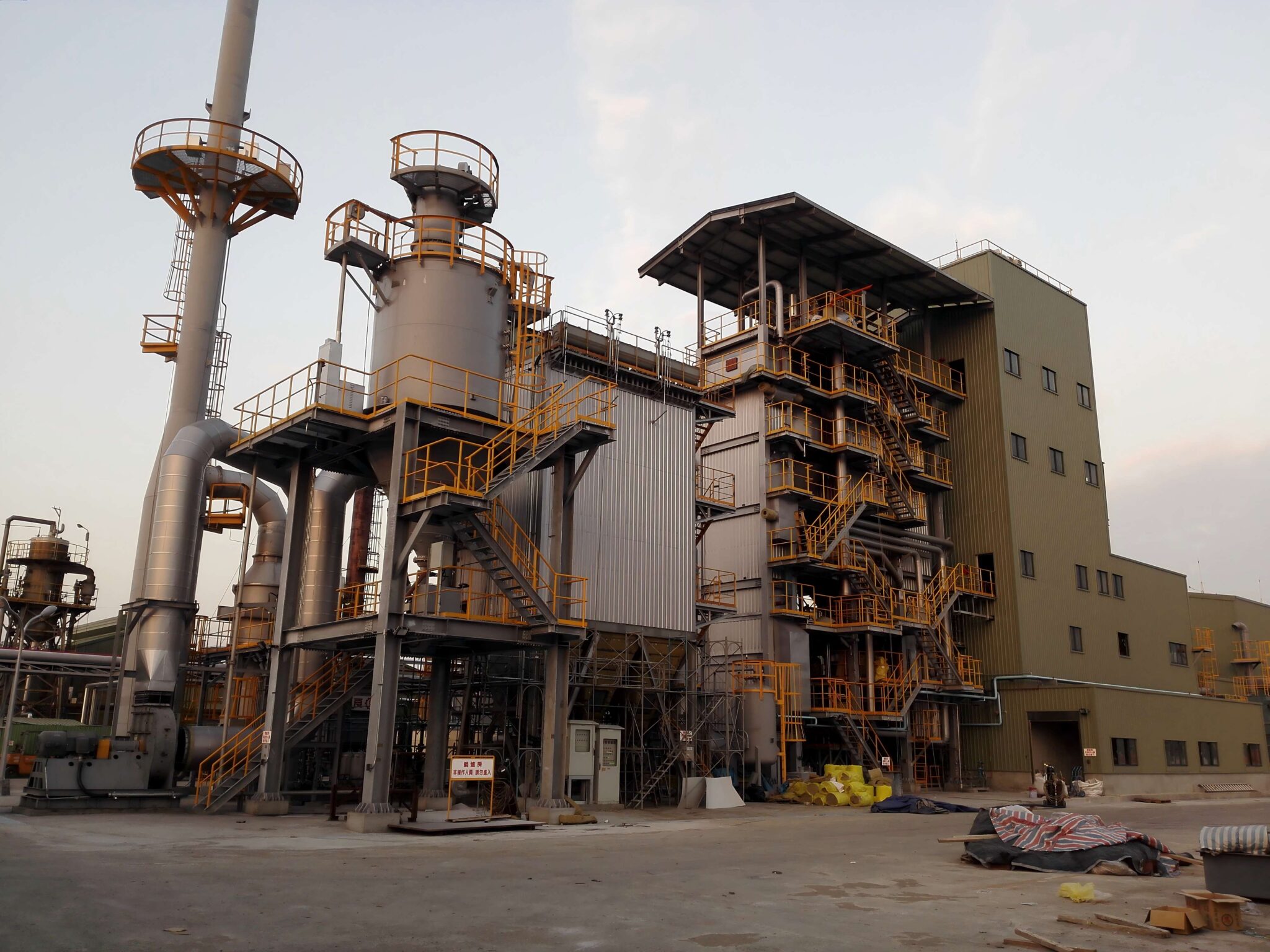
How Do Emissions Regulations and Carbon Compliance Shape Future Operating Costs?
As global and regional efforts to combat climate change and air pollution intensify, power station boilers are under mounting pressure to operate cleaner and more efficiently. Emissions regulations—including limits on SO₂, NOₓ, PM, mercury, and CO₂—have become increasingly strict, requiring continuous compliance and long-term investment in emissions control technologies. At the same time, carbon compliance mechanisms like taxes, trading schemes, and offsets are introducing new cost layers that directly affect the future profitability of thermal power plants.
Emissions regulations and carbon compliance shape future operating costs for power station boilers by requiring ongoing investment in emissions control equipment, consumables, monitoring, and reporting systems. Carbon pricing mechanisms—such as taxes or cap-and-trade programs—impose direct financial penalties on CO₂ emissions, making fuel choice and boiler efficiency critical cost factors. Over time, these regulatory costs can account for 10–25% of total OPEX, and failure to comply results in steep fines, permit revocation, or forced shutdowns.
In today’s regulatory climate, compliance is not just a requirement—it’s a long-term operating cost.
Carbon and environmental compliance costs are projected to rise steadily, adding up to 25% to boiler operating expenses by 2035.True
Global carbon pricing, regulatory tightening, and ESG pressure increase emissions-related financial burdens.
📋 Key Emissions Regulations Affecting Power Boilers
| Pollutant | Regulatory Limit Example | Compliance Technology |
|---|---|---|
| SO₂ | <100 mg/Nm³ (EU), <1 lb/MMBtu (US EPA) | Limestone injection, dry scrubbers |
| NOₓ | <50 mg/Nm³ (EU), <0.15 lb/MMBtu (US EPA) | SNCR, SCR, low-NOₓ burners |
| Particulates (PM) | <10 mg/Nm³ or filterable PM limits | Baghouse, ESP |
| Hg, HCl, HF | Trace emissions (especially for coal) | Activated carbon injection |
| CO₂ | Carbon pricing/tax or trading permits | Fuel switching, offsets, efficiency |
💰 Recurring Emissions-Related Operating Costs
| Cost Element | Annual Range (USD) | Notes |
|---|---|---|
| Reagents (urea, ammonia, limestone) | $100,000 – $500,000 | Tied to NOₓ and SO₂ load |
| Baghouse Maintenance | $80,000 – $150,000 | Bag replacement, leak detection |
| SCR Catalyst Replacement | $200,000 – $600,000 every 3–5 years | Dependent on firing temperature |
| CEMS Operation & Calibration | $40,000 – $70,000 | Required for continuous reporting |
| Emissions Testing & Compliance | $20,000 – $50,000 | Third-party testing, permit renewals |
These costs grow as regulation tightens and fuel sulfur or ash content increases.
🌍 Carbon Compliance Cost Structures
| Mechanism | Description | Cost Impact |
|---|---|---|
| Carbon Tax | Fixed cost per ton of CO₂ emitted | $20–$100/ton in many regions |
| Cap-and-Trade (ETS) | Purchase of CO₂ allowances or credits | Market-driven, volatile pricing |
| Carbon Offsets | External investment in reforestation, etc. | $10–$40/ton equivalent |
| Internal Carbon Pricing | Used for budgeting and risk analysis | $30–$80/ton (corporate planning) |
Example: 100 MW Boiler (Coal-Fired) – Carbon Cost Projection
| CO₂ Emissions (tons/year) | 400,000 – 500,000 |
| Carbon Price ($/ton) | $50 |
| Annual Carbon Cost | $20–25 million|
Over 20 years: $400–500 million in carbon compliance costs.
📊 Emissions Compliance Share of Lifecycle OPEX
| Category | % of Total Operating Costs |
|---|---|
| Fuel | 60–70% |
| Maintenance & Labor | 20–25% |
| Emissions & Carbon | 10–25% (and growing) |
| Water & Consumables | 5–10% |
Emissions-related costs are often higher than all other non-fuel O&M combined.
📈 Trends Shaping Future Cost Exposure
| Trend | Long-Term Impact |
|---|---|
| Tighter SO₂ & NOₓ limits | Higher reagent use, system upgrades |
| CO₂ pricing increases | Penalizes fossil fuels, especially coal |
| Carbon border taxes | Adds export/import risks for power producers |
| ESG & investor scrutiny | Requires transparent emissions reporting |
| Fuel blending and biomass co-firing | Helps reduce net CO₂ but adds complexity |
Carbon pricing and environmental rules will continue to tighten, with fossil-fired boilers facing the highest cost escalation risk.True
Energy transition policies increasingly target large stationary sources for decarbonization.
🧮 Strategies to Mitigate Compliance Cost Exposure
| Strategy | Benefit |
|---|---|
| Co-fire with biomass or low-carbon fuels | Reduces net CO₂ output |
| Upgrade to low-NOₓ burner & SCR | Future-proofs against tightening NOₓ regs |
| Install predictive monitoring for emissions | Optimizes reagent use |
| Bank carbon credits early | Hedge against future carbon price spikes |
| Invest in efficiency gains (turbine/boiler) | Reduces emissions per MWh produced |
Summary
In today’s regulatory environment, emissions and carbon compliance are no longer just environmental obligations—they are core financial challenges. For power station boilers, these costs are increasing steadily, driven by carbon pricing schemes, emissions caps, stricter permit thresholds, and public disclosure requirements. Over a boiler’s 20–30 year life, emissions-related expenses can represent a quarter or more of all operating costs. Managing these risks requires smart technology investments, fuel flexibility, and continuous monitoring. In the future of power generation, cleaner is not just greener—it’s cheaper over time.
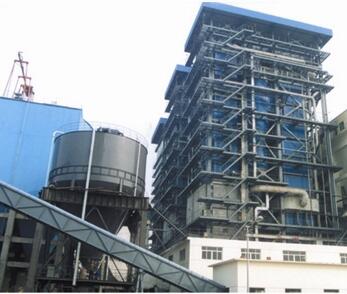
How Can TCO and ROI Be Calculated to Compare Boiler Options and Plan Long-Term Investments?
Choosing the right boiler system for a power station is a high-stakes capital decision—whether you’re building a new plant or retrofitting for fuel flexibility, emissions compliance, or efficiency. While upfront cost matters, it’s the Total Cost of Ownership (TCO) and Return on Investment (ROI) over the system’s life that determine long-term success. Poorly chosen systems may lock operators into decades of fuel overspending, maintenance headaches, or carbon tax exposure. That’s why using TCO and ROI calculations as part of Lifecycle Cost Analysis (LCCA) is essential to compare technologies and plan sustainable investments.
To calculate TCO and ROI for power station boilers, all capital and operating expenses over the boiler’s lifespan—typically 20–30 years—must be modeled. TCO includes initial investment (CAPEX), fuel, maintenance, emissions compliance, labor, water treatment, and decommissioning. ROI compares net financial gains or savings to that total investment. These metrics enable objective comparison of different boiler technologies (coal, CFB, gas, biomass) and reveal the most cost-effective option over time.
The cheapest boiler to buy is rarely the cheapest to own. TCO and ROI reveal the truth beneath the bid.
TCO and ROI calculations are essential tools for comparing power boiler options and guiding capital investment decisions.True
They integrate long-term cost drivers, enabling planners to evaluate operational feasibility and profitability over decades.
🧾 Step 1: Calculate Total Cost of Ownership (TCO)
TCO = CAPEX + ∑ (All OPEX over expected lifespan)
| TCO Component | Description |
|---|---|
| CAPEX | Boiler island, auxiliaries, installation |
| Fuel Cost | Fuel price × usage over life |
| Maintenance & Spares | Planned overhauls, part replacement |
| Emissions Compliance | Reagents, baghouse/SCR maintenance, carbon costs |
| Labor & Operations | Annual staff and service contractor costs |
| Water & Chemical Treatment | Water prep, dosing, blowdown |
| Decommissioning (optional) | End-of-life removal or remediation |
📊 TCO Example Comparison – 150 MW Power Boiler (30 Years)
| Cost Category | Coal-Fired Boiler | Gas-Fired Boiler | Biomass-Fired Boiler |
|---|---|---|---|
| CAPEX (Installed) | $130 million | $90 million | $110 million |
| Fuel (30 years) | $960 million | $820 million | $1.2 billion |
| Maintenance & Repairs | $60 million | $40 million | $75 million |
| Emissions Compliance | $85 million | $45 million | $55 million |
| Labor & Ops | $50 million | $45 million | $55 million |
| Water & Treatment | $20 million | $18 million | $22 million |
| Total TCO | $1.305B | $1.058B | $1.517B |
Even with higher CAPEX, gas offers lower TCO due to cleaner combustion and lower emissions cost.
🧮 Step 2: Calculate ROI (Return on Investment)
ROI = (Net Gain or Savings Over Lifecycle – Total Investment) ÷ Total Investment × 100%
ROI Application:
| Scenario | Value |
|---|---|
| TCO of Option A (e.g. coal) | $1.305 billion |
| TCO of Option B (e.g. gas) | $1.058 billion |
| Net Savings | $247 million |
| Investment (TCO of Option B) | $1.058 billion |
ROI = ($247M ÷ $1.058B) × 100 = **23.3%**
Switching to gas-fired boilers yields a 23.3% return over 30 years.
📈 Optional: Calculate Payback Period
Payback Period = Additional Investment ÷ Annual Savings
| Example Comparison | Value |
|---|---|
| CAPEX Difference (Coal vs. Gas) | $40 million more (coal) |
| Annual OPEX Savings | $8.5 million |
Payback = $40M ÷ $8.5M = **4.7 years**
Gas boiler’s additional investment pays back in under 5 years via lower OPEX.
📋 Key Inputs Needed for TCO/ROI Calculation
| Input | Why It Matters |
|---|---|
| Fuel cost forecasts | Dominates lifecycle costs |
| Boiler efficiency | Higher efficiency = lower fuel consumption |
| Emissions limits & carbon price | Determine reagent and penalty costs |
| Maintenance intervals | Drive long-term parts and labor spend |
| Discount rate (for NPV) | Converts future cash flows to present value |
| Load factor (% utilization) | Affects fuel, emissions, and wear |
TCO and ROI calculations must include realistic fuel cost projections and emissions scenarios to be accurate.True
Omitting these factors skews investment comparisons and can lead to underperforming asset decisions.
📦 Cost Sensitivity Example – Fuel Impact on TCO
| Fuel Cost Change | Effect on 30-Year TCO (Coal-Fired Boiler) |
|---|---|
| +10% increase | +$96 million |
| +25% increase | +$240 million |
| –10% decrease | –$96 million |
Fuel price swings of just 10–15% can erase or create millions in ROI margin.
🧠 Use TCO/ROI to Compare:
| Option Type | Consideration |
|---|---|
| Coal vs. Gas | Lower emissions cost vs. fuel risk |
| Grate vs. CFB Biomass | Flexibility vs. ash/refractory cost |
| New vs. Retrofit | Payback period vs. downtime |
| High-Efficiency Upgrade | Reduced fuel cost vs. added CAPEX |
Summary
TCO and ROI are essential financial metrics that reveal the true long-term cost and value of a power station boiler investment. By accounting for all capital and operating expenses across the system’s lifecycle—particularly fuel and emissions—these calculations enable smart comparison between technologies and fuel strategies. What looks cheap upfront may be expensive in the long run. By using TCO and ROI to plan, investors and operators ensure that their boiler systems deliver economic performance as well as thermal output—for decades to come.
🔍 Conclusion
An industrial power plant boiler represents a major, long-term infrastructure commitment. While upfront capital costs are substantial, it’s the operating expenses—especially fuel, emissions control, and maintenance—that dominate the lifecycle budget. Conducting a full lifecycle cost analysis ensures your project is technically, financially, and environmentally sustainable over decades of operation.
📞 Contact Us
💡 Need expert support in estimating or optimizing power boiler costs? Our engineers offer lifecycle cost modeling, system design consulting, and ROI forecasting for utility and industrial boiler projects.
🔹 Talk to us today to ensure your power boiler investment delivers maximum value across its entire lifespan. ⚡🏗️💰
FAQ
What is the average upfront cost of an industrial power plant boiler?
The upfront cost of an industrial power plant boiler typically ranges from $1 million to over $10 million, depending on:
Boiler type (subcritical, supercritical, CFB, pulverized coal)
Capacity (typically 50–500+ TPH)
Pressure/temperature ratings
Emission controls and fuel flexibility
Installation costs, including civil works, piping, instrumentation, and auxiliary systems, can add $500,000 to $5 million.
What are the typical long-term fuel costs?
Fuel costs vary by energy source:
Coal: $40–$60/ton
Natural gas: $6–$12/MMBtu
Biomass: $30–$100/ton
Heavy oil: $3–$4/gallon
Fuel often accounts for 70–80% of total operating costs, with large boilers spending $2 million to $10 million+ annually on fuel, depending on load and hours of operation.
How much do maintenance and O&M costs add up to over time?
Annual operation and maintenance (O&M) costs typically equal 3–6% of the capital cost, covering:
Tube inspections and replacements
Burner and refractory repairs
Ash and slag handling systems
Pump, fan, and valve maintenance
Over 20–25 years, total maintenance can reach $2 million to $8 million or more.
What hidden or indirect costs should be considered?
Emissions control systems: FGD, SCR, ESPs add capital and annual O&M costs
Water treatment and cooling systems
Insurance, compliance, and permitting fees
Plant staffing, automation systems, and operator training
Downtime-related losses and spare part inventory costs
How does the total cost of ownership (TCO) compare across boiler types?
While supercritical and CFB boilers have higher upfront costs, they offer better thermal efficiency and lower fuel costs per unit output. In contrast, oil-fired and conventional coal boilers may have lower CapEx but higher fuel and emissions-related expenses. A 20–30-year LCCA (lifecycle cost analysis) is essential for accurate comparison.
References
Capital and O&M Cost Estimating Guide for Boilers – https://www.energy.gov
Fuel Price Forecast and Cost Impact – https://www.eia.gov
Lifecycle Cost Modeling of Power Plant Boilers – https://www.sciencedirect.com
IEA Cost Reports for Thermal Power Plants – https://www.iea.org
Boiler Emissions Compliance and Equipment Costs – https://www.epa.gov
Biomass vs. Fossil Fuel Boiler Cost Comparison – https://www.bioenergyconsult.com
Boiler Operation & Maintenance Planning – https://www.mdpi.com
Industrial Boiler Insurance and Permitting Costs – https://www.energysavingtrust.org.uk
Power Plant Equipment and Spare Parts Cost Planning – https://www.automation.com
ASME Guidelines on Power Boiler Capital Planning – https://www.asme.org

